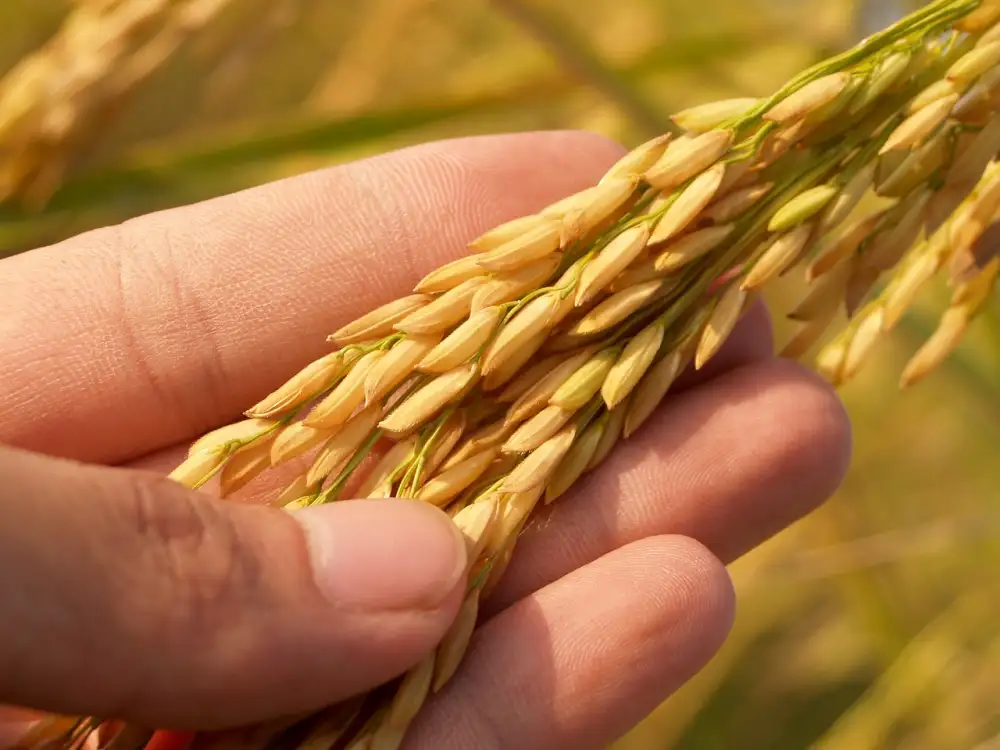Golden Delight: Exploring the Vibrant Flavors of Yellow Rice

- The history and cultural significance of yellow rice
- The ingredients required to make yellow rice
- Step-by-step instructions on how to cook yellow rice
- Variations and regional adaptations of yellow rice
- Pairing suggestions and serving ideas for yellow rice
- Health benefits of turmeric or saffron used in yellow rice
- Tips and tricks for achieving the perfect yellow rice
- Frequently asked questions about yellow rice
Yellow rice is a vibrant and flavorful dish that captivates both the eyes and taste buds. With its golden hue and aromatic spices, it adds a burst of color and excitement to any meal. Whether enjoyed as a side dish or the star of the show, yellow rice is sure to delight with its rich flavors and inviting aroma. Join us on a culinary journey as we explore the wonders of this beloved dish and uncover its secrets to creating a truly unforgettable dining experience.
The history and cultural significance of yellow rice
Yellow rice, also known as arroz amarillo or biryani, has a rich history and cultural significance. It is believed to have originated in the Middle East and spread to various parts of the world through trade routes. In many cultures, yellow rice is considered a symbol of prosperity and good luck. It is often served during festive occasions such as weddings, birthdays, and religious ceremonies. The vibrant yellow color is achieved by adding turmeric or saffron, which not only enhances the flavor but also holds symbolic value in many cultures. Yellow rice represents warmth, happiness, and abundance, making it a beloved dish in many culinary traditions around the globe.
The ingredients required to make yellow rice
To make yellow rice, you will need a few key ingredients. The star of the dish is turmeric or saffron, which gives the rice its vibrant yellow color. Other essential ingredients include long-grain rice, onion, garlic, and chicken or vegetable broth for added flavor. A touch of olive oil or butter can also be used to enhance the richness of the dish. With these simple ingredients, you can create a fragrant and flavorful pot of yellow rice that will tantalize your taste buds.
Step-by-step instructions on how to cook yellow rice
To cook yellow rice, follow these simple steps:
1. Rinse the rice: Start by rinsing 1 cup of long-grain rice under cold water until the water runs clear. This removes any excess starch and ensures fluffy grains.
2. Sauté the aromatics: In a large saucepan, heat 2 tablespoons of oil or butter over medium heat. Add 1 finely chopped onion and sauté until translucent. Then add 2 minced garlic cloves and cook for another minute.
3. Add spices: Stir in 1 teaspoon of ground turmeric or saffron threads, 1/2 teaspoon of ground cumin, and a pinch of salt. Toast the spices for about 30 seconds to release their flavors.
4. Cook the rice: Add the rinsed rice to the pan and stir it well to coat it with the spices. Pour in 2 cups of chicken or vegetable broth and bring it to a boil.
5. Simmer and steam: Reduce the heat to low, cover the pan tightly with a lid, and let it simmer for about 15-20 minutes or until all the liquid is absorbed and the rice is tender.
6. Fluff and serve: Remove the pan from heat and let it sit covered for an additional 5 minutes to allow the rice to steam further. Then, fluff it gently with a fork before serving.
Enjoy your fragrant and vibrant yellow rice as a delicious side dish or as a base for various flavorful recipes!
Variations and regional adaptations of yellow rice
Variations and regional adaptations of yellow rice are as diverse as the cultures that embrace this vibrant dish. In Latin America, arroz amarillo is often prepared with sofrito, a flavorful blend of onions, peppers, garlic, and tomatoes. In the Caribbean, yellow rice is known as arroz con pollo, a popular one-pot meal made with chicken and spices. In India, turmeric-infused yellow rice called pulao is a staple in many households. Each region adds its own unique twist to this beloved dish, making it a truly global culinary delight.
Pairing suggestions and serving ideas for yellow rice
Yellow rice is a versatile dish that can be paired with a variety of proteins and vegetables to create a complete meal. Here are some delicious serving ideas to enhance the flavors of this vibrant dish:
1. Serve yellow rice as a side dish with grilled chicken or fish. The aromatic flavors of the rice complement the smoky charred flavors of the protein.
2. Pair yellow rice with spicy curries or stews. The mild sweetness of the rice balances out the heat and adds an extra layer of flavor to the dish.
3. Create a colorful and nutritious bowl by topping yellow rice with roasted vegetables like bell peppers, zucchini, and carrots. Add some protein such as tofu or chickpeas for a satisfying vegetarian option.
4. Use yellow rice as a filling for burritos or wraps. Add some black beans, avocado, and salsa for a tasty and filling meal on-the-go.
5. For an exotic twist, serve yellow rice alongside Mediterranean dishes like grilled lamb skewers or kebabs. The fragrant spices in both dishes complement each other beautifully.
6. Make a refreshing salad by mixing chilled yellow rice with diced cucumbers, cherry tomatoes, and feta cheese. Drizzle with lemon vinaigrette for a light and tangy dressing.
7. Serve yellow rice as a bed for sautéed shrimp or scallops. The delicate seafood pairs well with the vibrant flavors of the turmeric-infused rice.
Remember to garnish your yellow rice with fresh herbs like cilantro or parsley to add brightness and freshness to your plate. Experiment with different pairings to discover your own favorite combinations!
Health benefits of turmeric or saffron used in yellow rice
The vibrant yellow color of yellow rice comes from the addition of turmeric or saffron. These spices not only enhance the flavor and appearance of the dish but also offer numerous health benefits. Turmeric, known for its active compound curcumin, is a powerful anti-inflammatory agent that can help reduce inflammation in the body. It is also rich in antioxidants, which can protect against cell damage and boost overall health. Saffron, on the other hand, contains several beneficial compounds that have been linked to improved mood and reduced symptoms of depression. Additionally, both turmeric and saffron have antimicrobial properties that can support a healthy immune system. So not only does yellow rice taste delicious, but it also provides a dose of wellness with every bite.
Tips and tricks for achieving the perfect yellow rice
1. Use high-quality saffron or turmeric to ensure a vibrant yellow color.
2. Soak the rice for at least 30 minutes before cooking to achieve a fluffy texture.
3. Toast the spices in oil before adding the rice to enhance their flavors.
4. Add a pinch of salt and a squeeze of lemon juice to enhance the overall taste.
5. Cook the rice on low heat and avoid stirring too much to prevent it from becoming mushy.
6. Let the cooked rice rest for a few minutes before fluffing it with a fork.
7. For added flavor, you can add diced vegetables or protein like chicken or shrimp while cooking.
8. Experiment with different herbs and spices like cumin, coriander, or cardamom to personalize your yellow rice recipe.
9. Adjust the amount of spices according to your taste preferences, but be careful not to overpower the dish.
10. Serve hot and garnish with fresh cilantro or parsley for an extra burst of freshness.
By following these tips and tricks, you'll be able to create a perfectly seasoned and beautifully colored yellow rice that will impress your family and friends alike!
Frequently asked questions about yellow rice
1. What gives yellow rice its vibrant color? Yellow rice gets its vibrant hue from the addition of turmeric or saffron, which also imparts a unique flavor.
2. Can I use other types of rice to make yellow rice? Yes, while traditionally made with long-grain white rice, you can experiment with different varieties like basmati or jasmine for a twist.
3. Is yellow rice spicy? No, yellow rice is not inherently spicy. However, you can add spices like cumin or chili powder if you prefer a spicier version.
4. Can I make yellow rice without turmeric or saffron? Yes, you can achieve a similar color by using annatto seeds or food coloring, although the flavor profile may differ slightly.
5. How long does it take to cook yellow rice? Typically, it takes around 20-25 minutes to cook yellow rice on the stovetop, but cooking times may vary depending on the type of rice used.
6. Can I freeze leftover yellow rice? Yes, you can freeze leftover yellow rice in an airtight container for up to three months. Just make sure to thaw and reheat it properly before serving.
7. Are there any vegan or vegetarian variations of yellow rice? Absolutely! Yellow rice can be easily customized to suit vegan or vegetarian diets by using vegetable broth instead of chicken broth and omitting any animal-based ingredients.
8. Can I add vegetables or protein to my yellow rice? Of course! Yellow rice pairs well with vegetables like peas, carrots, and bell peppers. You can also add cooked chicken, shrimp, or tofu for added protein.
9. Does yellow rice have any cultural significance? Yes, yellow rice holds cultural significance in many countries such as Spain (paella), India (pulao), and Indonesia (nasi kuning) where it is often served during special occasions and celebrations.
10. Can I adjust the level of spiciness in yellow rice? Absolutely! You have full control over the spice level in yellow rice. Add more or less chili powder, cayenne pepper, or other spices to suit your taste preferences.
In conclusion, yellow rice is a dish that not only delights the taste buds but also captivates with its vibrant golden hues. The combination of aromatic spices and fluffy grains creates a truly satisfying culinary experience. Whether you're exploring the cultural significance or simply enjoying the flavors, yellow rice is a must-try dish. So, embrace the golden hues and indulge in the delicious flavors of this delightful dish.
Published: 01. 12. 2023
Category: Food



